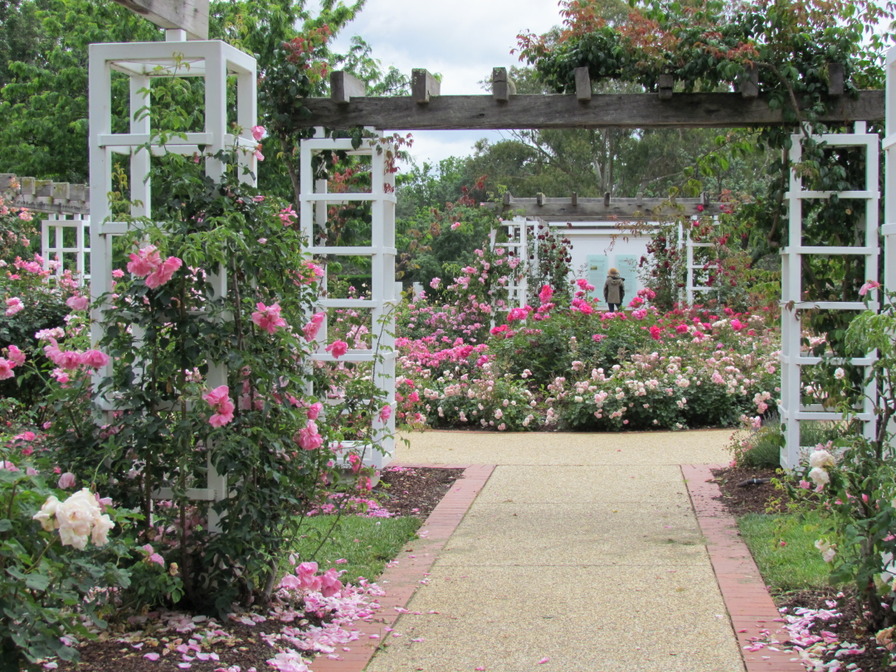|
|
Old Parliament House Gardens - Rex Hazlewood Rose Garden

Photo courtesy of Nadene
Rose (public) Garden
Listing last updated on Sat Apr 2025
Canberra, Australian Capital Territory
Australia
The Old Parliament House Gardens are located in the heart of the Parliamentary Zone on either side of Old Parliament House. The Gardens have been restored to their former glory, enhanced with the introduction of features such as seating pavilions, pergolas, rose arbours, pathways, gateways and the refurbishment of the tennis courts and bowling green.
The Old Parliament House Gardens are comprised of two separate gardens, within each are located two main rose gardens:
House of Representatives Garden
Ladies Rose Garden (Hybrid Tea and Floribunda roses)
Macarthur Rose Garden (China, Tea and Noisette roses)
House of Representatives, Tennis Courts (climbing roses bred by Alister Clark)
Bowling Green Pavilion
Senate Garden
Broinowski Rose Garden (Shrub roses)
Rex Hazlewood Rose Garden(Asian and European history of the rose, includes roses by Australian rose breeder Alister Clark)
Senate Tennis Courts (climbing roses bred by Alister Clark)
The Old Parliament House Gardens are open to the public year round:
Summer hours (during daylight savings): 7am to 8pm
Winter hours: 7am to 5pm
2015 Australian Rose Annual
p134. Judy Refshauge, Old Parliament House Rose Gardens .....
2017 Australian Rose Annual
p106. Steve Beck, Old Parliament House Rose Garden, ACT....
Courtesy State Library New South Wales.
https://www.sl.nsw.gov.au/blogs/rex-hazlewood-photo-collection-sydney-and-new-south-wales-1909-1957
David ‘Rex’ Hazlewood (1886 – 1968) was born in Dulwich Hill in Sydney’s Inner West and grew up in the suburban areas around Homebush, Chatswood and Epping. He first trained as a tailor in a city clothing warehouse but it was Rex’s father, David, who was himself a keen amateur photographer who fostered the same passion in his son.
In 1909, when he was 23, Rex began training for the Baptist ministry and the two years spent in country New South Wales as student pastor allowed him to take photographs of Yeoval, Manildra and Molong. On his return to Sydney in 1911, he took photographs of the areas around his family home in Epping – including several series of the new developments in the north western suburbs, government works and the newly-built Central Markets (now Paddy’s Markets) in the city.
His photographs recall the farming days of Sydney’s outer suburbs, including fruit-growing in Epping and timber-hauling in Carlingford. Some time between 1911 and 1916, Rex Hazlewood began to identify himself as a professional photographer and he appears to have gained several contracts to record the progress of large government building projects. He enlisted in the Australian Imperial Force in 1916 and left for England in 1917. He served at the Western Front, and at the end of 1918 he was appointed an official war photographer until his return to Australia in November 1919.
After his marriage to Robin Kendall in 1920 and the birth of his son, Rex Hazlewood continued to take photographs, probably on a contract basis and for commercial postcards. Some of these postcards were taken with his rotating panoramic camera – 75 examples of panoramic negatives are held in the Mitchell Library’s collection. By the late 1920s, Rex was finding it impossible to make ends meet as a freelance photographer. His brothers owned a nursery in Epping. Rex worked for them, taking photographs of gardens, plants and animals to illustrate their catalogues and writing articles on plants and garden design. He developed a passion for landscape design and delivered illustrated talks on the topic to interested groups. Rex Hazlewood left his brothers’ nursery in around 1935 and undertook various jobs until the end of the Second World War, when he began a business selling wholesale roses to nurseries. His last series of photographs recorded a European trip taken with his wife in 1956-57.
|